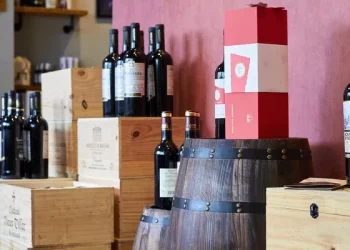“Rubies, along with diamonds, sapphires and emeralds, are known as the four major gemstones in the world.
Are there any stones whose diamonds rise even faster?
Ruby prices have done so in recent years.
The price of diamonds as a whole has increased by about 30 to 50 percent since 2008, while the price of high-quality rubies as a whole has increased by at least 70 to 100 percent since 2008.
Good rubies rarely come in large carats.
Rubies over three carats are very rare, and those over five carats are extremely rare.
Generally speaking, when rubies are larger than 2 carats, there will be a big difference in price, while below 1 carat, there is no strong collection value.
Good cutting can not only make the gem shine, but also enhance the value of the stone.
The standard way of cutting rubies is different from diamonds in that rubies are not cut geometrically to achieve maximum brilliance. For rubies with thick colors, the optimal cut should be lighter than the average level to allow more light to pass through the gem, while for those with lighter colors, a darker cut helps to reflect the color.
A well-cut ruby reflects light evenly across the entire surface.
Moreover, well-cut rubies do not show the bands of color often found in corundum crystals, which usually indicate that the cutter wanted to preserve weight rather than cut the most beautiful gem possible.
There are two cases of false rubies: the first is a low-grade red color stone posing as a ruby, and all false rubies have no ruby specific color shape and light.
The second type is artificial ruby.
Artificial rubies are very similar to natural rubies in terms of specific gravity, hardness and color.
Method 1: Select cubic zirconia with a hardness of 8.5, and use the edges and corners of the gem to delimit cubic zirconia. Those who can be scratched are true, and those who cannot be scratched are false.
The hardness test can easily distinguish the true ruby from the red gem.
But other red gems are damaged, so use with caution.
Method 2: Comprehensive ruby optical properties and fluorescence, first use a portable detector to test, exclude all the red gems that can not emit red light.
At this point, the red light may be ruby, may be red spinel.
Then observe its optical properties, single rainbow is red spinel, double rainbow is ruby.
The hardness and optical properties of artificial rubies and natural rubies are basically the same, making it difficult for primary collectors to tell the difference between them.
Natural rubies often contain naturally occurring flaws, such as cracks, wrinkles, and cotton.
The artificial texture is more even.
Under longwave UV light, the red fluorescence of artificial rubies is mostly brighter than that of natural rubies.
Four factors affect the ruby level and price: Color: preferably VIVID RED or RED;
Impurities: invisible to the naked eye is better;
Carat: at least 1 carat or more to have collection value;
Cutting aspects: at least 40% of the fire.
In addition, the origin of the ruby is also very important.
Pigeon Blood stones produced in Myanmar are of the most commercial value. Therefore, merchants will issue certificates issued by authorities such as GRS for the corresponding stones, and clearly mark “Burma (Mogok, Myanmar)” in the column of Origin.
When reading the gemstone certificate, the Comment column is very important. Only by marking “No indicationof thermal treatment” can we indicate that the pigeon red gemstone has not been artificially optimized.
At present, the most recognized Burmese ruby in the international market is the certificate issued by GRS(Gem Research Swiss), which was obtained by Dr. A in 1996.
Created by Peretti, the certificate features the ability to indicate the provenance and optimal treatment of rubies, sapphires, emeralds and other gemstones.
At present, there are only two laboratories in Bangkok, Thailand and Hong Kong.
of course, some merchants will also provide the certificate issued by GIA(Gemological Institute of America), the American Gemological Institute, but it does not specify the origin of the gem. Because the origin of rubies is single, the GRS certificate is relatively more comprehensive.












































